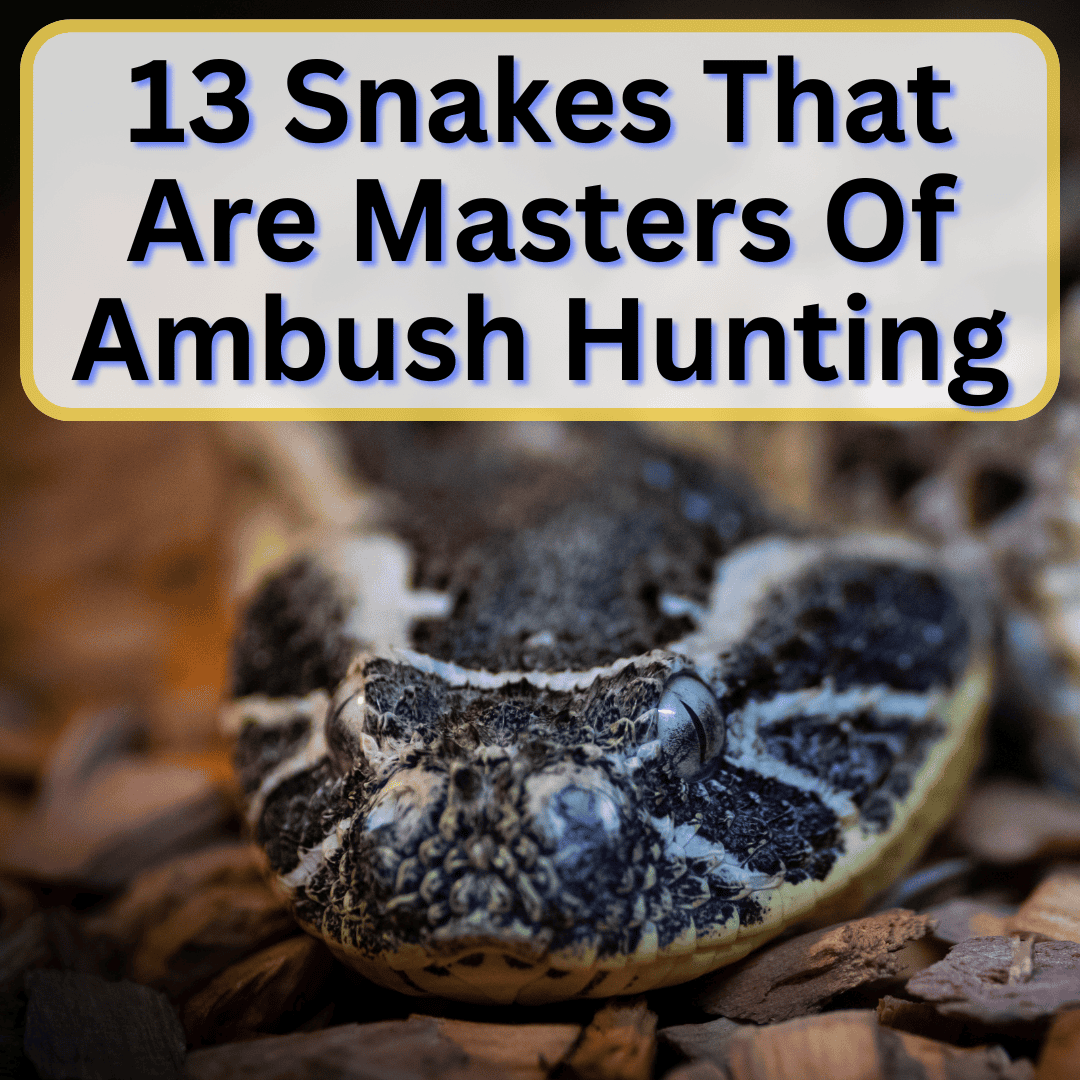
Through patience, camouflage, and those lightning-fast strikes, these reptiles have turned waiting into a superpower.
They use ambush hunting to stay hidden until just the right moment.
Then, bam! They attack prey that never saw it coming.
From Africa’s venomous vipers to South America’s hulking constrictors, different snake species have found their own spin on ambush tactics.
Some use heat sensors to spot warm-blooded animals, others disappear into the landscape like living shadows.
Whether they’re lurking in water, curled up on a forest floor, or buried in desert sand, these snakes prove that sometimes, the best offense is just waiting it out.
Snakes That Are Ambush Masters
All snakes are great at ambush hunting, but the following 13 species really take it to the next level.
1. Bushmaster
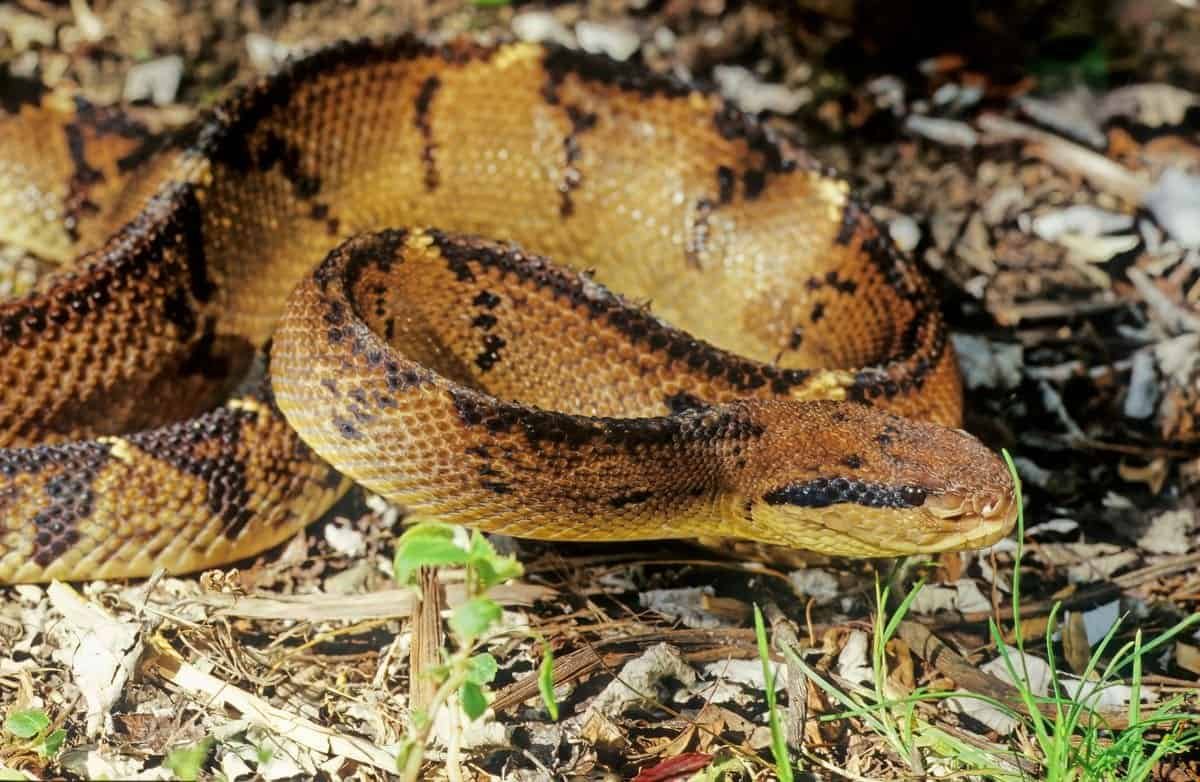
Bushmasters hang out in South American rainforests and they’ve turned waiting into an art form. These giants can stay frozen in place for weeks.
If you ever spot a bushmaster, you might think it’s dead. Seriously, they barely budge. Sometimes, they’ll choose a single spot and just… wait.
Because they’re so big, hiding isn’t easy. So instead, they rely on patience. You won’t catch them chasing after prey.
Bushmasters eat small mammals, birds, and sometimes bats. They just wait for these animals to stroll by, then strike out of nowhere. When prey gets close, the bushmaster explodes into action. It strikes fast, injecting venom with fangs that can reach 4 centimeters.
That venom? It’s loaded with toxins that paralyze victims in seconds, making it a breeze for the snake to swallow them whole.
2. Puff Adder
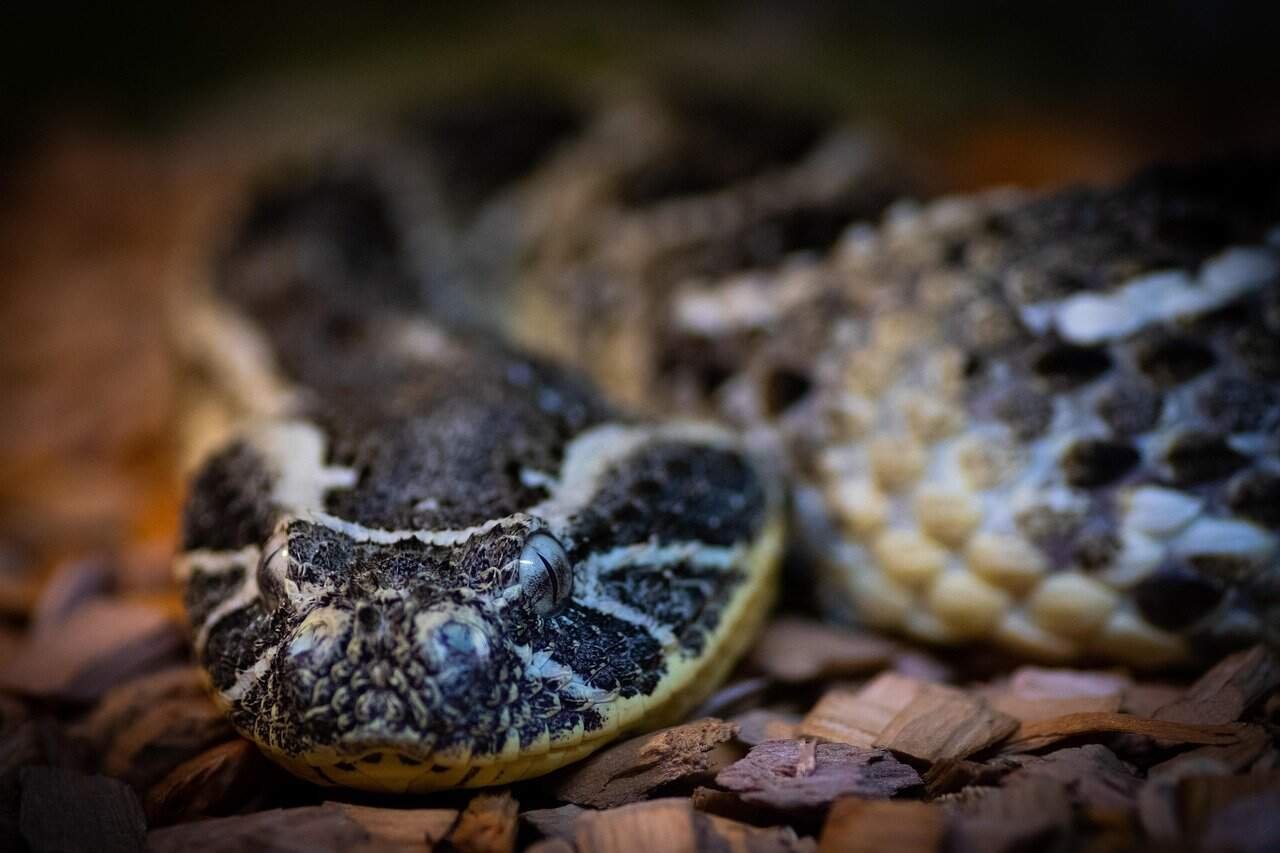
Puff adders are everywhere in Africa and, they’re terrifyingly good at ambushing. These snakes are responsible for more deaths there than any other snake. Their camouflage is next-level. Their skin mimics the sun-dappled earth so well that even if you’re looking, you might not spot one.
Puff adders are patient—sometimes you walk right past one and never realize it. They’ll lie motionless for days, just waiting for something tasty to wander by.
Here’s something wild: puff adders can mask their scent, making them almost invisible even to animals that hunt by smell. They’re the first known land animal to pull off scent camouflage.
When prey finally wanders near, the adder’s strike is shockingly fast. They might seem sluggish, but in that split second, they’re all business.
3. Boa Constrictor
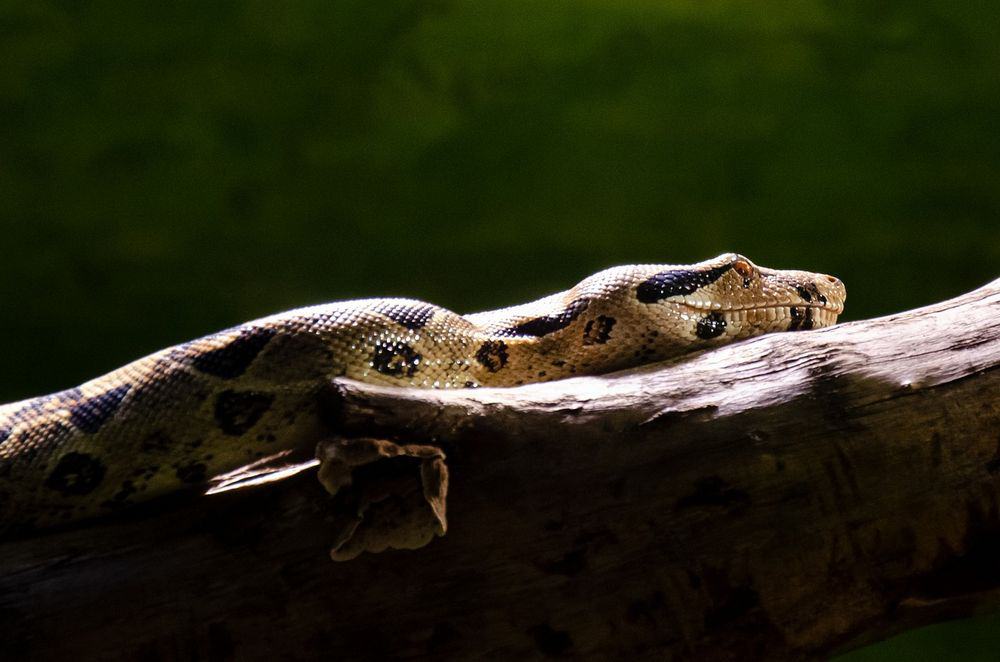
Boa constrictors have these special heat-sensing pits along their upper lips—imagine built-in night vision. These organs pick up infrared radiation from warm-blooded animals.
Watching a boa hunt at night is something else. They track down rodents and birds in pitch darkness, just using those heat sensors. Those pits work like a thermal camera, letting the boa “see” the heat of its prey through thick grass or leaves.
They can sense a hamster’s body heat from several feet away. With paired heat-sensing organs, boas pinpoint exactly where their next meal is hiding—kind of like how your eyes help you judge distance.
This ability turns boas into top-tier ambush hunters. They’ll just wait, then strike with uncanny accuracy when a warm meal gets close.
4. King Cobra
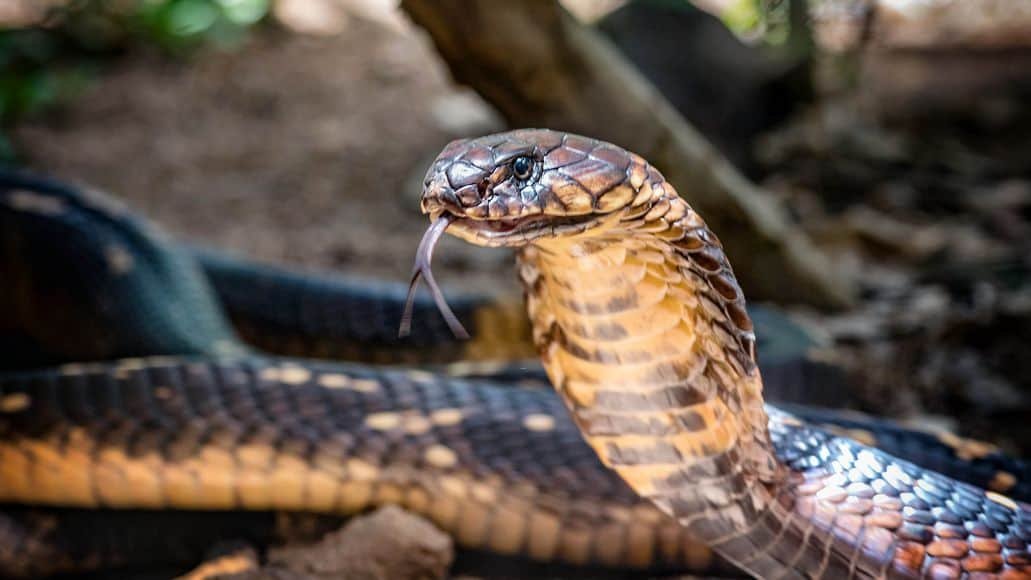
King cobras, the world’s longest venomous snakes, can reach up to 18 feet. They’re clever hunters, moving slowly and quietly through trees and bushes to sneak up on other snakes. Their patience and stealth are impressive.
King cobras pick their hiding spots carefully. They love hiding in thick grass or behind rocks or anywhere else they’ll go unnoticed by their prey.
Their eyesight is unusually sharp for a snake, helping them spot prey from a distance while staying hidden. Once they spot a target, the strike is lightning-fast. Their long bodies give them surprising reach.
Here’s a neat trick: after biting, they let go instead of holding on. This helps them avoid injury from bigger or feistier snakes. Their venom acts fast, stopping the prey’s heart and breathing, and then the cobra follows the scent trail to claim dinner.
5. Rattlesnake
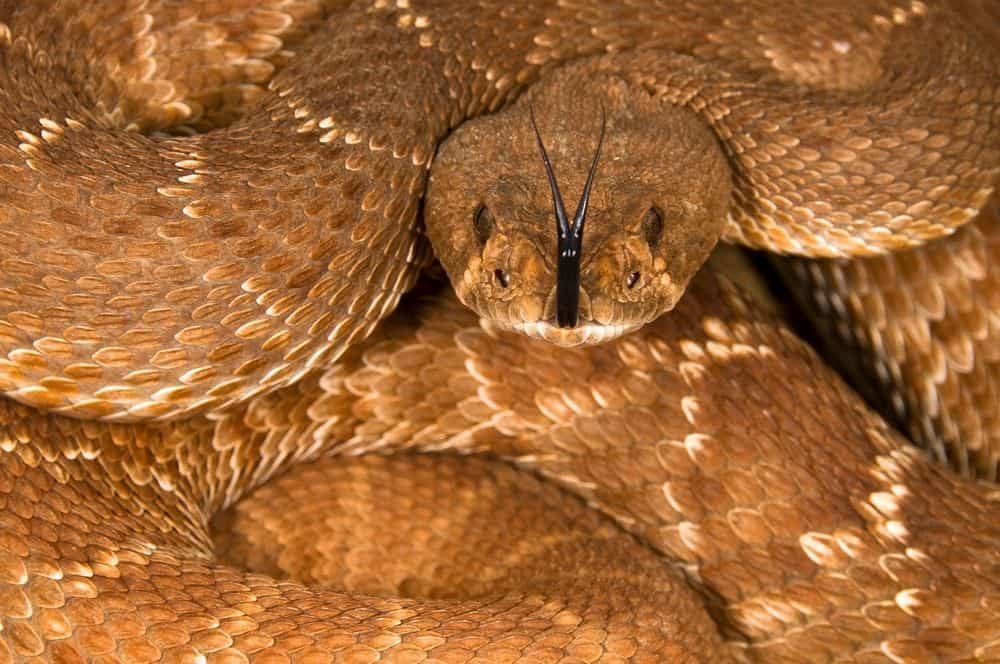
You could walk right past a rattlesnake and never know it’s there. They’re absolute pros at blending in. Their scales match rocks, leaves, dirt—you name it. This camouflage keeps them hidden from both prey and predators.
Rattlesnakes find a good spot and stay put, sometimes for hours. They’re not in a rush. Patience is their edge. When prey gets close, the strike is insanely quick—faster than a blink. Hollow fangs deliver venom, and the snake lets go, waiting while the poison does its work.
They also have pit organs for detecting heat, so even in total darkness, they know exactly where a warm-blooded animal is hiding.
6. King Brown Snake
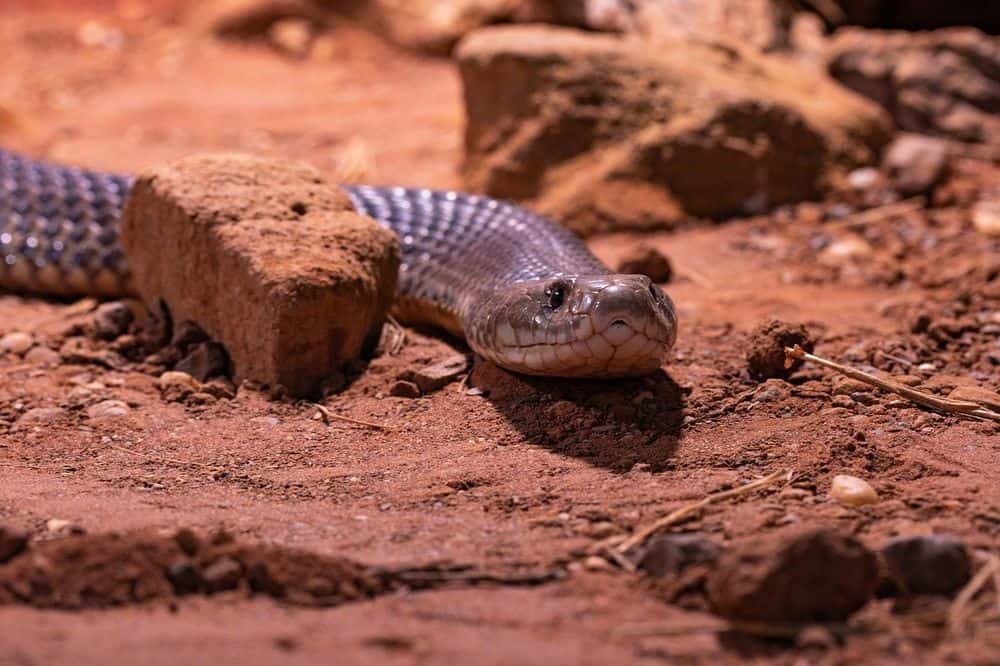
The king brown snake, or mulga snake, is widespread across Australia. Oddly enough, it’s part of the black snake family. It’s Australia’s largest venomous land snake, sometimes reaching 9 feet.
The mulga snake uses its size and stealth to its advantage. You’ll find it hiding in rocky spots, under logs, or deep brush, waiting for something to wander by.
When it hunts, it goes after lizards, birds, even other snakes—including venomous ones and sometimes its own kind. Its venom isn’t the most toxic in Australia, but the snake can deliver a lot of it in a single bite thanks to its size.
The brown and olive-green colors let it vanish into the dry landscape. Prey usually doesn’t notice until it’s too late. If you ever see one, keep your distance. Mulga snakes will defend themselves if they feel threatened.
7. Halys Viper
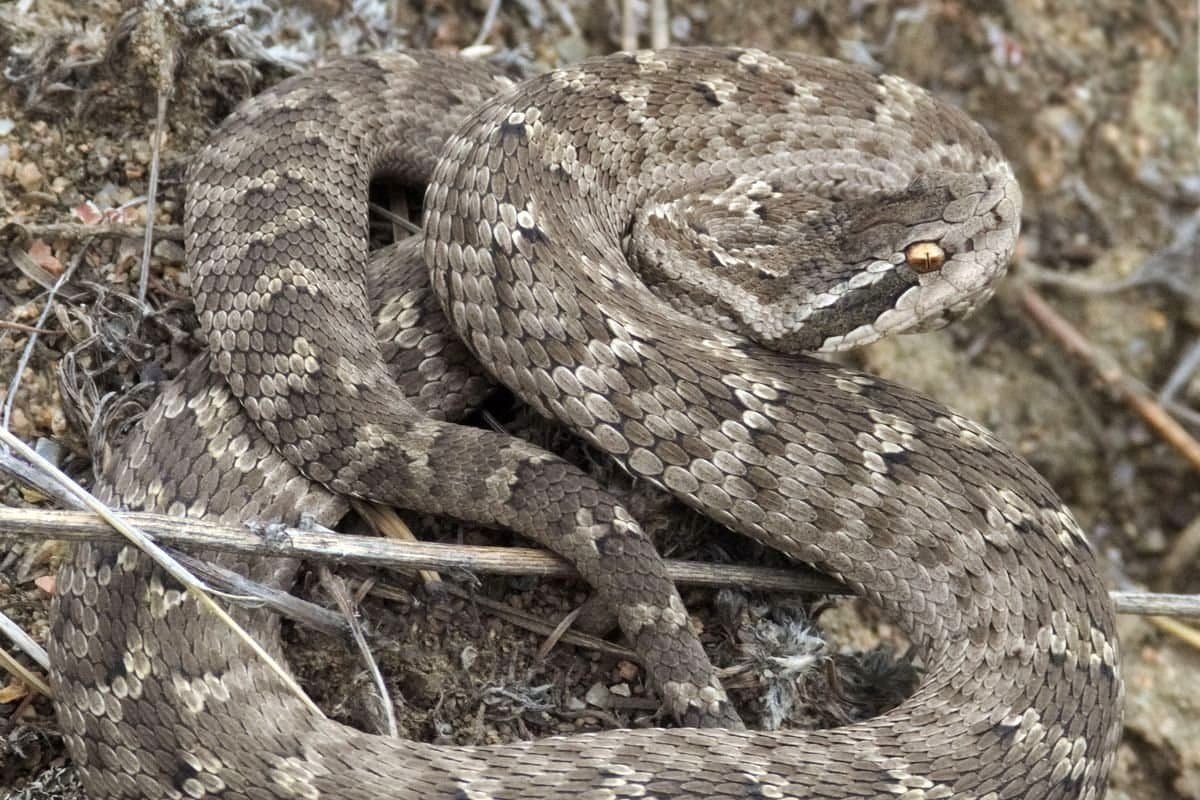
The Halys pit viper covers a massive range across Asia, from Russia east of the Urals to China and Beijing. It survives in Central Asia’s tough mountain regions—rocky grasslands, open woods, scrubland, places most people avoid.
This snake is all about patience. It stays perfectly still, waiting for small mammals or birds to get close enough. Chasing prey isn’t its style. Instead, it relies on pit organs to sense heat from potential meals nearby.
Its coloring blends right into rocks and dry grass, so you’d probably never spot one unless you’re really looking.
When prey is close, the Halys viper strikes with speed. Its venomous bite quickly stops escape attempts. This energy-saving hunting style is ideal for harsh environments where food isn’t easy to come by.
8. Cottonmouth
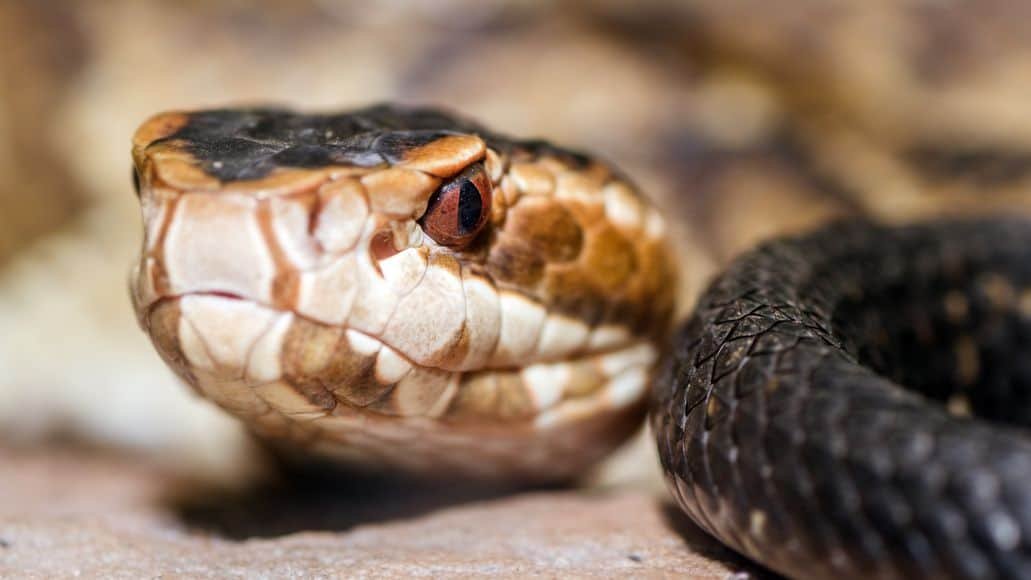
Cottonmouths hang out in southeastern US wetlands, waiting perfectly still—sometimes for hours. They’re true masters of patience. They hide in thick weeds by the water, barely moving until a frog or fish swims past.
Watching a cottonmouth hunt is like watching a pro. They can stay hidden underwater or along the shoreline, waiting for just the right moment.
Cottonmouths can grow up to three feet and have thick, muscular bodies, so their strikes pack a punch. They have potent venom, making their attacks devastatingly effective. One quick bite is often all it takes for fish, frogs, or small mammals.
These snakes pick their ambush spots carefully—rivers, lakes, marshes—the water gives them cover, and prey tends to wander close. They are also excellent swimmers.
9. Gaboon Viper
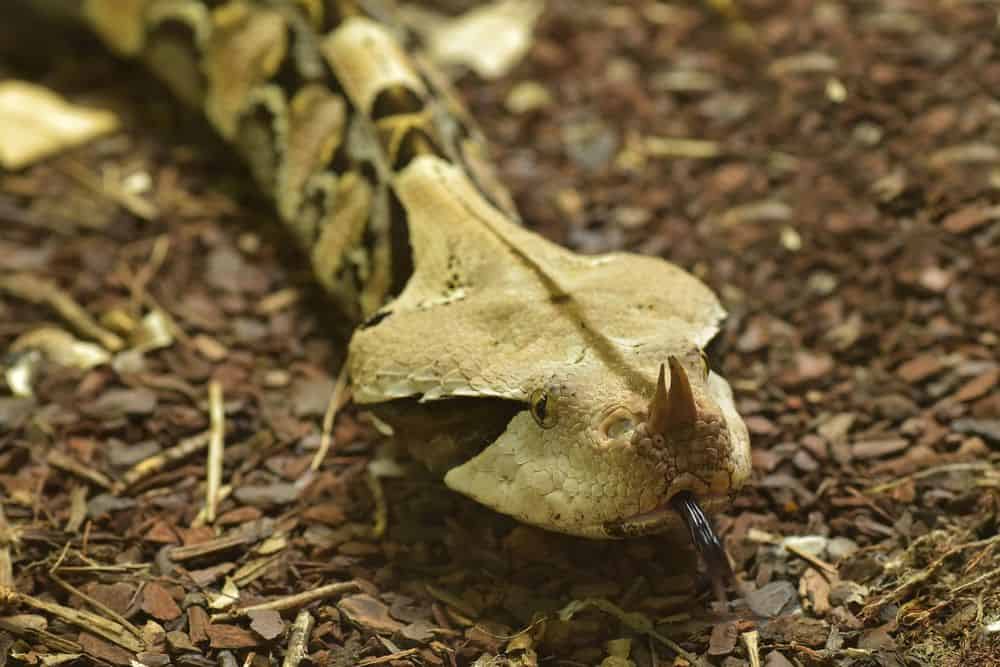
Gaboon vipers lurk in African rainforests and savannas. If you think you’d spot one easily, think again—they’re nearly invisible among leaves and forest debris. Their camouflage is unreal. The patterns and colors match the forest floor so well you could walk right by and never notice.
They’ll stay perfectly still for hours, just waiting for the right opportunity.
This viper has the longest fangs of any snake—up to two inches. Its wide head holds massive venom glands, but it mostly uses that power for hunting, not fighting.
Gaboon vipers rely on blending in to get close, then use those huge fangs for a fatal bite. They can take down surprisingly large prey—antelopes, monkeys, you name it.
10. Copperhead

Copperheads are all about the classic ambush. They’ll sit completely still on forest floors, letting prey come to them. Their camouflage is fantastic—coppery heads and hourglass patterns let them vanish among fallen leaves.
They choose their spots wisely, often near animal trails where small mammals pass by regularly. When you see a copperhead hunt, it’s all about patience. They can sit for hours without moving a muscle.
They eat small rodents, frogs, and insects that get too close. The strike is quick, and then they wait for the venom to do its job.
11. Fer-de-Lance
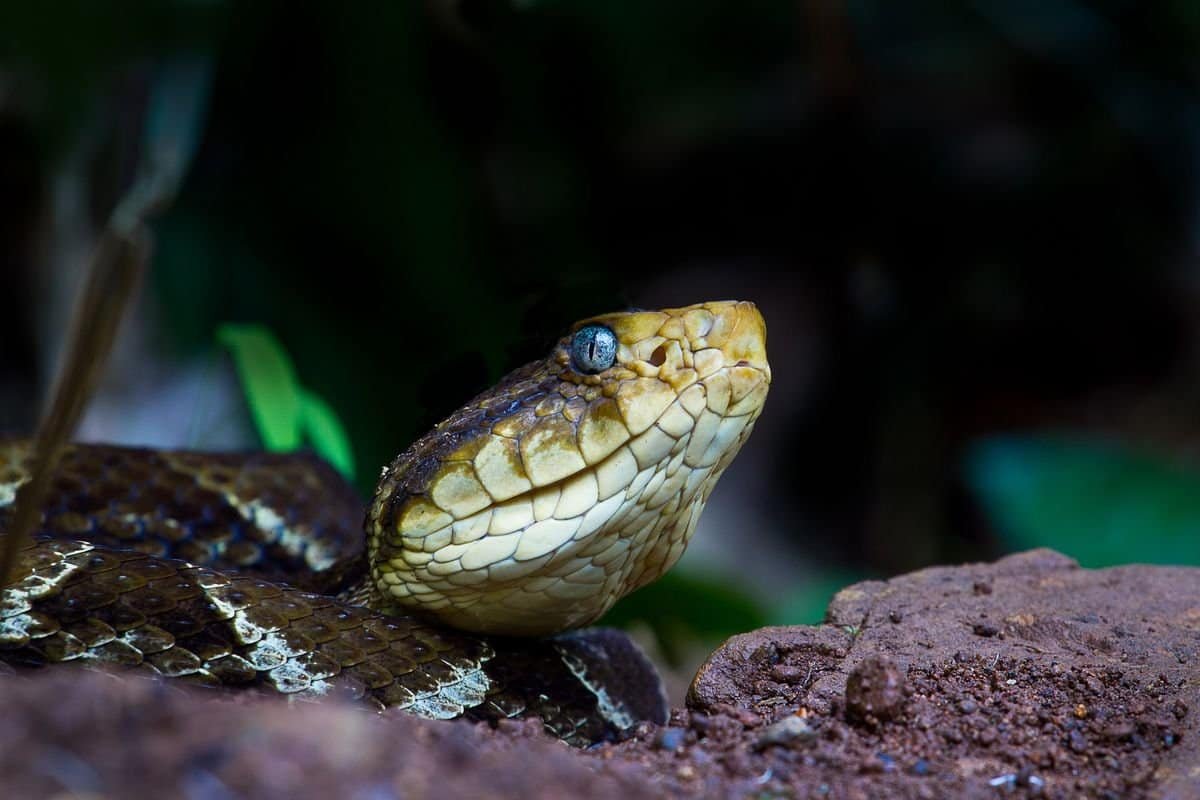
You’ll spot the fer-de-lance in the tangled forests of Central and South America. This pit viper’s reputation is no joke—it’s one of the most dangerous snakes out there.
The fer-de-lance is all about patience. It’ll sit motionless for ages, blending right in with the leaves and debris on the forest floor. Its mottled brown and tan coloring makes it nearly vanish among the shadows.
When something wanders by, the snake explodes into action. Blink and you’ll miss it—the strike is so fast, you wouldn’t even register the danger until it’s over.
Mostly, this snake hunts at night, but it won’t hesitate during the day if the opportunity is right. It targets small mammals, birds, frogs, and lizards—though rats and mice seem to be the top picks.
Between its eyes and nostrils, the fer-de-lance has heat-sensing pits, like some kind of built-in night vision. Even if you’re walking nearby in total darkness, it knows exactly where you are.
The venom is seriously nasty for humans, attacking blood and causing internal bleeding. No wonder people in its territory treat it with a lot of respect—and maybe a little fear.
12. Black Mamba
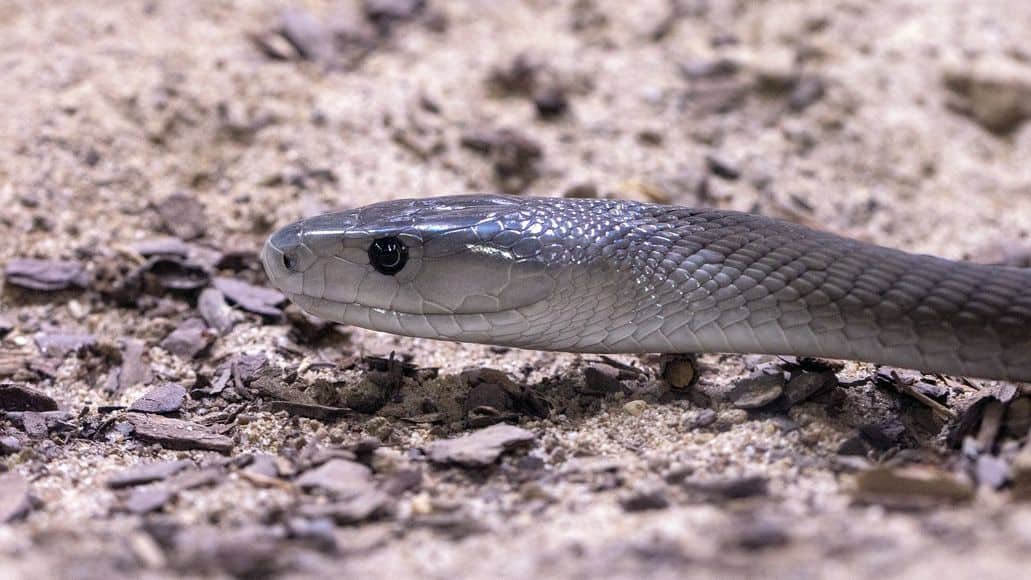
People often picture black mambas chasing down their meals due to their famed speed, but they’re just as deadly when lying in wait. These African snakes know how to pick their moment.
Watch a black mamba hunt and you’ll notice the “strike-and-release” move: a quick bite, then a retreat while the venom does its thing.
Their speed is wild—even among snakes, black mambas are ridiculously fast. You won’t see the strike coming, not a chance. If the first ambush doesn’t work out, they’ll switch gears and chase down their target. Not many snakes can pull off both styles so well.
The venom is packed with neurotoxins and acts fast. Once a black mamba nails its prey from cover, there’s really not much hope for escape. You’ll often find them using their agility to set up shop in just the right spot, waiting for the usual traffic of small mammals and birds.
13. Carpet Python
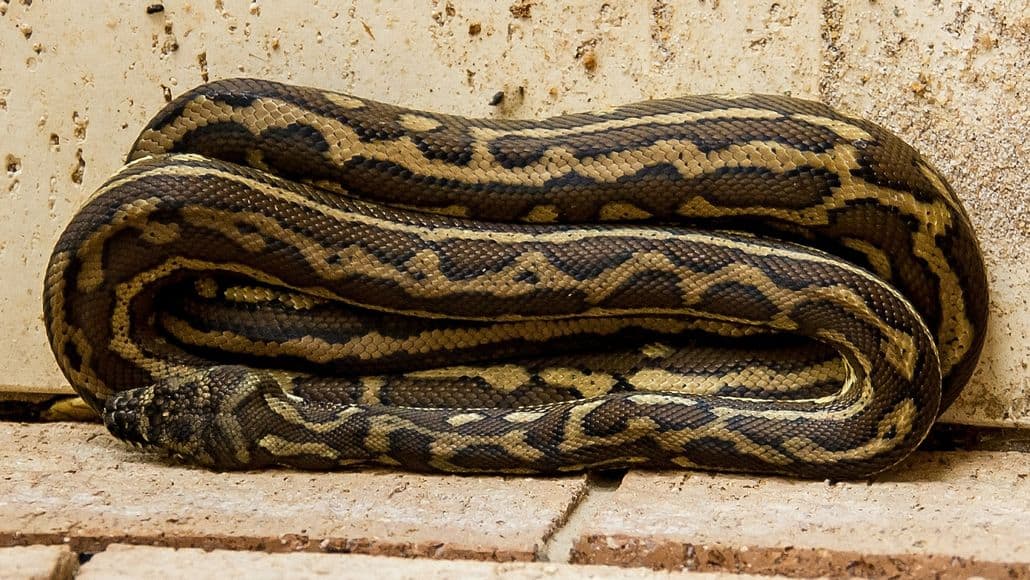
Carpet pythons are the definition of patient hunters. These non-venomous snakes from Australia and New Guinea stay perfectly still, sometimes for hours, waiting for something tasty to wander by.
They’ve got heat-sensing pits along their bottom jaw. Think of them like tiny thermal cameras. They come in very handy when hunting at night. When the time’s right, the python launches a lightning-fast strike. The prey barely knows what hit it.
Then comes the real power move: the python wraps its muscular body around the animal, coiling tight and squeezing until the prey can’t breathe anymore. It’s not about crushing bones—just cutting off the air. The animal passes out, and the python swallows it whole, no rush.
Some carpet pythons reach up to 13 feet long. That size lets them tackle all sorts of animals—rats, possums, birds, you name it. They’re mostly night hunters, which lines up with when their favorite snacks are active. The whole ambush-and-constrict routine works really well for them in the wild.
How Ambush Hunting Works
Snakes keep things simple: they stay still, blend in, and wait for the perfect moment to strike. Camouflage, special senses, and split-second reflexes make them surprisingly effective.
Key Tactics Snakes Use
- Patience and positioning are everything. Some snakes will wait in one spot for hours, even days, barely twitching a muscle. They pick their ambush sites carefully—places where prey is bound to pass by, like animal trails, watering holes, or feeding spots.
- Heat detection is a serious advantage. Pit vipers and pythons use special sensors to spot warm-blooded animals, even in pitch black.
- Strike timing is all about speed. When prey wanders into range, the snake launches itself with scary accuracy. Some, like the tentacled snake, get creative—twisting their bodies into shapes that funnel prey right into their jaws. It’s a wild adaptation.
- Camouflage integration is another trick—they blend in so well, prey strolls right past without a clue.
Environmental Adaptations
- Body coloration and patterns let snakes disappear into their chosen hiding spots. Green tree pythons look just like leaves, while desert vipers could pass for rocks or sand.
- Body shape modifications help them stay put for long stretches. Ambush snakes are usually stockier than those that chase down prey.
- Specialized scales on the belly grip surfaces, so the snake won’t slide around when it’s ready to strike.
- Reduced movement requirements mean they don’t need to eat as often. Some can go weeks between meals—impressive, honestly.
- Sensory enhancements like heat pits, a supercharged sense of smell, and sensitivity to vibrations help them track prey without moving an inch.
Benefits Over Active Hunting
- Energy conservation is a huge win. By waiting instead of chasing, snakes save a ton of energy. Chasing prey burns calories fast, but ambush tactics let snakes stretch the time between meals.
- Higher success rates come from the element of surprise. Prey that never sees a predator almost never escapes.
- Reduced injury risk is another plus. Less chasing means fewer chances to get hurt by struggling prey.
- Stealth advantages lead to cleaner kills—prey doesn’t have time to react or fight back.
- Territory efficiency means a snake can manage with a smaller patch of land. They don’t need to roam huge distances like some other predators.
Common Habitats for Ambush Predators
Ambush snakes pick their spots carefully. They want good cover, steady prey traffic, and conditions that play to their strengths. Not every patch of ground will do.
Forests And Dense Vegetation
Forests are prime real estate for ambush snakes. Thick plants, leaf litter, and tangled branches make hiding a breeze.
- Tree-dwelling species like green tree pythons and emerald tree boas spend most of their lives wrapped around branches, barely moving. Their green scales help them blend right into the canopy. They can sit still for hours, picking up the faintest heat from animals below. When something’s close enough, they strike down fast.
- Ground-level hunters tuck themselves under logs, rocks, and piles of leaves. They target busy spots—animal trails, watering holes, feeding grounds, and shelters. The forest floor stays cool and damp, which helps snakes regulate their body temperature while they wait things out.
Deserts And Rocky Terrain
Desert snakes have it tougher—less shade, more heat, not a lot of places to hide.
- Rocky areas are the best bet. Cracks and crevices offer shade and protection. Many desert vipers squeeze into these gaps to escape the sun. Some species lift part of their body off the ground for a better view and to stay cooler. It’s a neat trick for surviving the heat.
- Termite mounds make surprisingly good ambush spots. Snakes use old mounds for shelter and as lookout posts to spot passing prey. Most desert ambush hunters get active at dawn and dusk when it’s cooler—otherwise, it’s just too hot for much action.
Aquatic and Semi-Aquatic Environments
Water habitats bring their own set of challenges and advantages for snakes that know how to use them. There’s usually plenty of fish and unique hunting opportunities.
- Freshwater systems support snakes like the tentacled snake. They hang out near underwater plants or fallen branches, curling their bodies into loops to funnel fish right into their strike zone. Water slows down prey, so snakes can better predict movement. Many aquatic hunters have sensors that pick up on subtle water vibrations.
- Swamp and marsh areas give snakes options—water for hunting, land for basking or hiding. Anacondas, for example, love these mixed spots. They lurk in shallow water near shorelines where animals come to drink. Wetland plants provide extra cover, and snakes can switch between water and land depending on what they need—whether it’s hunting or just staying comfortable.
Ambush Master Snakes: Conclusion
Snakes really show what patience and stealth can do. These hunters wait for just the right moment before they strike, a skill that took millions of years to develop.
Different snakes use their bodies in clever ways. Some coil into loops to fool their prey, while others vanish into the background without a trace.
With heat sensing, many snakes hunt even when it’s pitch dark. They track warm-blooded animals by sensing body heat. That’s a serious advantage, isn’t it?
Ambush hunting saves them energy. Rather than wasting effort chasing prey, these snakes just stay still. When the timing’s right, they strike in a flash.
Each species has its own tricks:
- Pythons squeeze their prey tight
- Vipers use deadly venom
- Tree snakes hang from branches
- Water snakes hide underwater
These methods work so well that snakes live almost everywhere—forests, deserts, even oceans. It’s kind of wild how adaptable they are.
So, next time you think of snakes, maybe remember their wild hunting skills instead of just the scary stuff. They’re true masters of survival, and their ambush techniques are proof that nature really knows how to shape a perfect predator.
Sometimes, the best move is just knowing how to wait. Snakes certainly have that down.
Leave a Reply